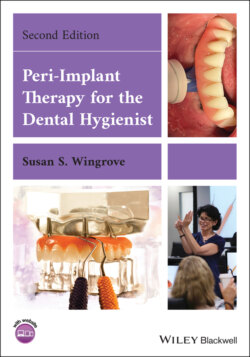Читать книгу Peri-Implant Therapy for the Dental Hygienist - Susan S. Wingrove - Страница 30
Diabetes
ОглавлениеDiabetes mellitus is a group of metabolic diseases recognized as a global epidemic by the World Health Organization (WHO) that affects over 8% of the adult population worldwide (18). Diabetes is defined by elevated levels of glucose in the bloodstream. Type 1 diabetes is absolute insulin deficiency and type 2 diabetes is a metabolic disorder with high blood glucose with insulin resistance and some insulin deficiency.
According to the latest 2017 World Workshop, Peri‐implantitis Review, the evidence is; “inconclusive as to whether diabetes is a risk factor/indicator for peri‐implantitis” (19). Recent studies showed evidence that a diabetic patient who completes dental implant therapy can masticate food, which will lead to improved nutrition and metabolic control (8). Diabetic patients do have an increased inflammatory response, are at risk for other complications, such as retinopathy, nephropathy, neuropathy, macrovascular disease, and poor wound healing. If they have poor metabolic control, successful periodontal and peri‐implantitis therapy can greatly improve diabetics’ metabolic control and tissue inflammation (20–26).
It is recommended prior to implant therapy, that the dentist request a HbA1c test/results of any diabetic patient and continue to monitor their diabetic implant patients. This test allows for the dentist to monitor the diabetic patient’s blood sugar level to confirm that the patient’s levels are staying within a controlled range. Dental professionals can now offer their diabetic patients HbA1c tests in‐office. This allows the dentist the ability to monitor diabetic patients, identify and treat any signs of peri‐implant inflammation early.
Good news for diabetic patients that current studies indicate that controlled diabetes show the same dental implant survival rate as patients without diabetes and it is now considered a predictable dental rehabilitation procedure for diabetics (8).
